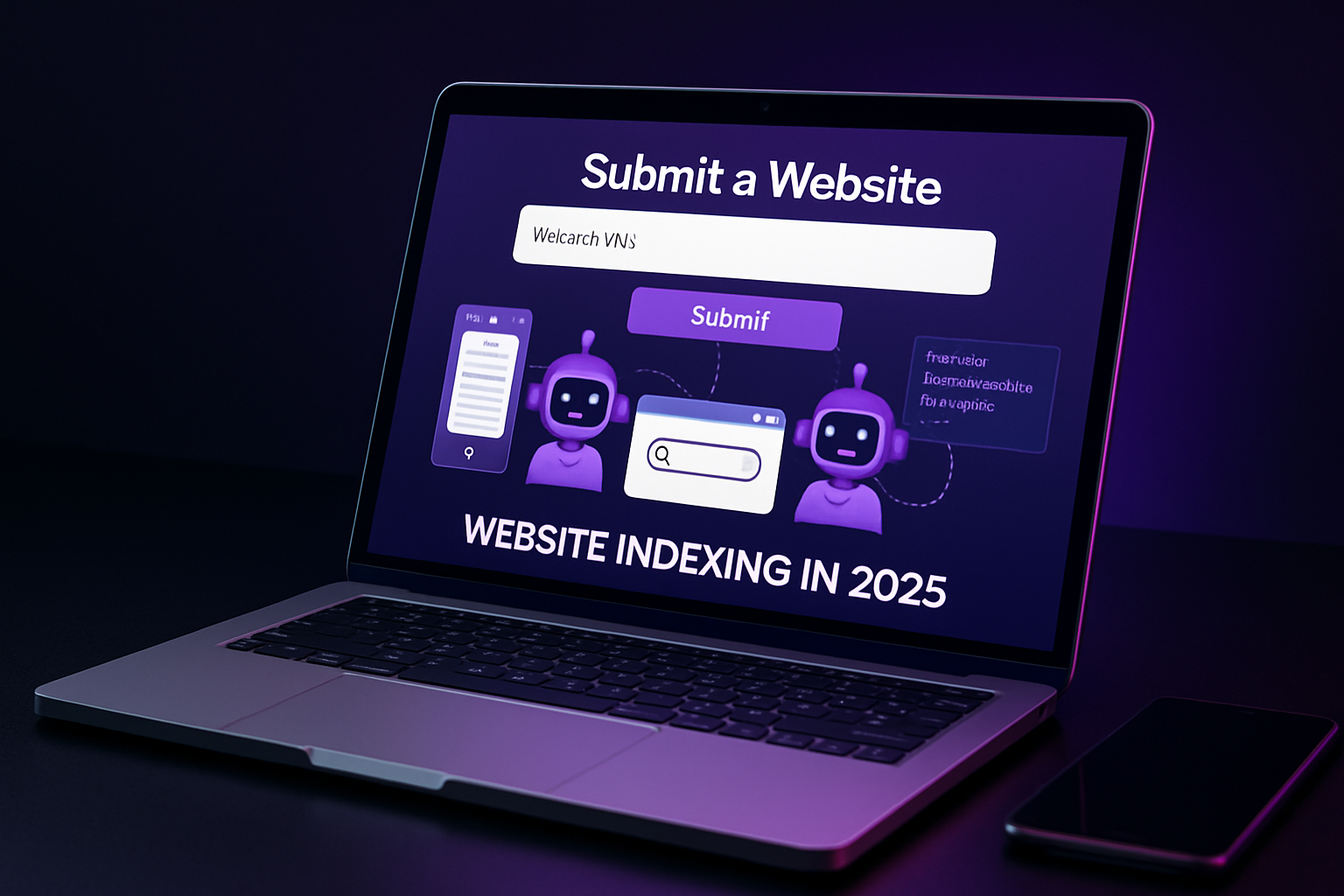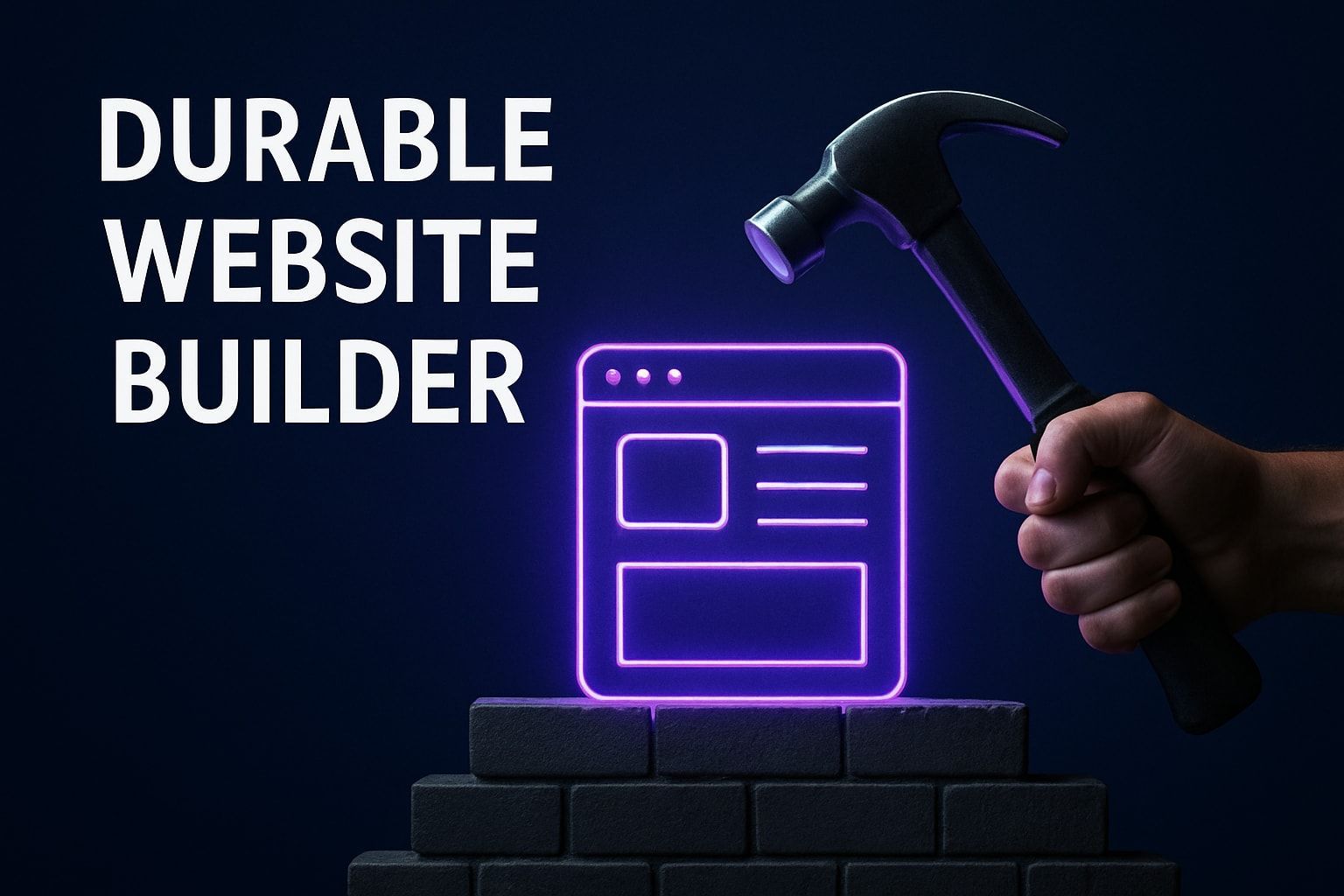7 Easy Ways to Add Your Website to Search Engines in 2025
Did you know that in 2025, over 90% of businesses will compete for attention online? Simply going live isn’t enough—if no one can find your site, it might as well be invisible. That’s why learning how to add your website for maximum visibility is essential.
This guide reveals seven straightforward strategies to help your site shine. From search engine submissions to leveraging social platforms and trusted directories, you’ll discover practical steps anyone can follow for faster results.
Craving more visitors and growth? Dive in and see how easy it is to get noticed online in 2025.
Understanding Website Indexing in 2025
If you want to add your website to the digital world in 2025, understanding website indexing is essential. Indexing is the process where search engines like Google and Bing discover, analyze, and store your site’s pages so they can appear in search results. Without proper indexing, even the best-designed website remains invisible to potential visitors.
Search engines use sophisticated crawlers—automated bots—to find and evaluate new websites. In 2025, these crawlers are more advanced than ever, focusing heavily on mobile-first experiences and leveraging AI to understand content contextually. If you add your website but ignore these trends, you risk being left behind.
Indexing can happen automatically if your site is linked from elsewhere or manually when you submit your site directly to a search engine. Manual indexing is especially valuable if you want to add your website quickly. Common barriers to indexing include poor site structure, missing or incorrect sitemaps, and restrictive robots.txt files.
A fast indexing process can be the difference between early business success and months of waiting for traffic. For example, a new online store that gets indexed within days can start attracting customers almost immediately, while slow indexing means lost opportunities. According to Top 30 Interesting Stats About Indexing and SEO in 2025, it typically takes 4 to 7 days for a well-optimized new site to appear in Google, but delays can stretch to weeks if issues exist.
Optimizing to add your website for multiple search engines—not just Google—broadens your reach. Each search engine has unique algorithms and requirements, so covering all bases ensures maximum visibility.

The Role of Sitemaps and Structured Data
To efficiently add your website to search engines, XML sitemaps serve as a roadmap, guiding crawlers to every important page. A well-structured sitemap increases the chances your content is indexed quickly and completely.
Structured data, or schema markup, helps search engines understand your site’s content. For instance, adding schema to a product page can highlight prices, reviews, and availability directly in search results. In 2025, search engines increasingly rely on these signals to prioritize which sites to index first.
When you add your website, always create and submit an up-to-date sitemap through search engine webmaster tools. Use schema markup on all key pages and validate your setup to avoid errors. These steps ensure your site stands out and gets indexed faster.
Common Indexing Mistakes to Avoid
Many site owners struggle to add your website to search engines due to avoidable errors. Missing domain setup, poor mobile optimization, and redirect loops are frequent culprits. These issues confuse crawlers, leading to skipped pages or delayed indexing.
If you want to add your website successfully, always check for blocked pages in your robots.txt file and avoid unnecessary noindex tags. Use Google Search Console reports to diagnose problems, identify crawl errors, and monitor your site’s indexing status.
By proactively fixing these mistakes, you make it easier for search engines to add your website and keep your pages discoverable.
Preparing Your Website for Submission
Launching a website is exciting, but before you add your website to any search engine or directory, preparation is everything. A well-prepared site is far more likely to be indexed quickly, rank higher, and attract visitors from day one.

A clean, mobile-friendly design is your foundation. In 2025, over 70% of searches happen on mobile devices, and search engines now prioritize mobile-first indexing. Make sure your site adapts seamlessly to all screen sizes and is ADA-compliant, so users with disabilities can easily navigate. This attention to detail not only improves user experience but also signals to search engines that your site is trustworthy and ready for visibility when you add your website.
Content is king, but quality is the crown. Populate your site with unique, updated, and relevant information that answers your audience’s questions. Avoid duplicate or thin content, as these can delay indexing. Use clear headings, concise paragraphs, and engaging visuals to help both users and search bots understand your value. Before you add your website, ensure your homepage and key pages are fully built out—empty pages can hurt your first impression.
Technical readiness is a must for a successful launch. Create an intuitive site structure with internal links that guide visitors (and search engines) through your content. Double-check your robots.txt file and noindex tags to avoid accidentally blocking important pages. For more detailed advice, review these essential Website SEO optimization tips to cover all technical bases before you add your website to Google or Bing.
Let’s compare well-prepared and poorly prepared sites:
| Aspect | Well-Prepared Site | Poorly Prepared Site |
|---|---|---|
| Mobile Design | Responsive, ADA-compliant | Desktop-only, inaccessible |
| Content | Unique, updated, keyword-optimized | Sparse, duplicated, outdated |
| Navigation | Clear menus, internal links | Confusing, broken links |
| Technical SEO | Optimized robots.txt, valid sitemap | Blocked pages, missing sitemap |
Before you add your website, run through this quick checklist:
- ✅ Mobile-friendly and accessible design
- ✅ Unique, updated content on all key pages
- ✅ Logical navigation and internal linking
- ✅ Robots.txt and noindex tags set correctly
- ✅ No broken links or placeholder pages
Taking these steps ensures your site stands out and is ready for fast, successful indexing. The better you prepare, the faster you’ll see results once you add your website.
7 Easy Ways to Add Your Website in 2025
Ready to boost your online visibility in 2025? Whether you’re launching a brand new site or revamping an old one, it’s essential to add your website using proven strategies. Getting indexed isn’t just about being found on Google—it’s about maximizing reach across all search engines and platforms.
The best part? You don’t need to be a tech expert. By following these seven easy methods, you’ll cover all the bases to add your website, attract more visitors, and build a strong online presence for the future.

1. Submit Your Site to Google Search Console
Google remains the world’s most popular search engine, so your first step should be to add your website through Google Search Console. This free tool allows you to communicate directly with Google, ensuring your site is crawled and indexed efficiently.
Here’s how to get started:
- Go to Google Search Console.
- Click “Add Property” and choose between Domain (all subdomains and protocols) or URL Prefix (a specific address).
- Verify ownership—options include DNS record, HTML file upload, or tag insertion.
- Once verified, submit your XML sitemap. For guidance, check out these Sitemap XML best practices to improve your submission.
- Use the “Request Indexing” tool for individual URLs you want indexed quickly.
Common issues like verification errors or incorrect sitemap formatting can delay results. If you run into trouble, double-check your DNS settings or refer to Google’s troubleshooting documentation.
Monitoring your site in Search Console helps you track performance, fix errors, and ensure every time you add your website, it’s found by Google faster.
2. Add Your Website to Bing Webmaster Tools
Don’t overlook Bing—Microsoft’s search engine powers results for Bing, Yahoo, and DuckDuckGo. To maximize your reach, add your website to Bing Webmaster Tools.
Getting started is simple:
- Visit Bing Webmaster Tools and sign up or log in.
- Click “Add a Site” and enter your website URL.
- Verify ownership using available methods (XML file, meta tag, or DNS record).
- Submit your sitemap to help Bing crawl your pages.
Bing offers unique features like built-in SEO analysis and keyword research tools. These insights can help you refine your site and outperform competitors.
Bing’s market share is growing, especially among professional and older demographics. By ensuring you add your website to Bing, you tap into a valuable audience segment.
If you encounter submission issues, check your sitemap format and ensure your robots.txt file isn’t blocking Bing’s bots. Regularly review crawl reports to stay on top of your site’s health.
3. Leverage High-Authority Business Directories
Business directories remain a powerful way to add your website for better visibility. In 2025, platforms like Google Business Profile, Yelp, LinkedIn, and Apple Maps are crucial for local and national reach.
Follow these steps:
- Choose reputable directories relevant to your industry and location.
- Create a detailed, accurate listing with your business name, address, phone (NAP), website, and description.
- Upload high-quality images and keep information up to date.
- Encourage satisfied customers to leave reviews—positive ratings boost visibility.
SEO Benefits Table
| Benefit | Directory Example | Result |
|---|---|---|
| Backlink/Citation | LinkedIn, Yelp | Higher rankings, traffic |
| Local Map Placement | Google Business | Appears in map results |
| Trust & Authority | Apple Maps | Improved credibility |
Maintaining NAP consistency across listings is key. Inconsistent details can confuse search engines and hurt your rankings. By regularly updating your directory profiles, you ensure that every time you add your website, it stays discoverable and trustworthy.
4. Share Your Website on Social Media Platforms
Social media isn’t just for engagement—it’s a discovery engine. When you add your website to platforms like Facebook, Instagram, TikTok, and LinkedIn, you boost its chances of being found by both users and search engines.
How to get started:
- Create business profiles on your chosen platforms.
- Craft engaging posts introducing your website, including a link and a compelling call-to-action.
- Use relevant hashtags, join groups, and participate in communities for broader reach.
- Integrate share buttons on your site for easy content distribution.
Example: A small business launched its website and saw a surge in visitors after a viral TikTok post. Search engines picked up on the buzz, indexing the site within hours.
Don’t forget Open Graph tags for Facebook and Twitter Cards for X (formerly Twitter). These ensure your links display attractive previews, increasing click-through rates every time you add your website to a social feed.
5. Submit Your Website to Niche and Local Listings
Niche and local directories cater to specific industries and regions, making them excellent places to add your website for targeted visibility.
Here’s how to leverage them:
- Research directories relevant to your field (e.g., healthcare, law, tech).
- Look for local business associations, chambers of commerce, or city-specific platforms.
- Submit your website with complete, accurate details.
- Add rich content—photos, certifications, product lists—to stand out.
Local listings help improve your map pack rankings and drive qualified traffic. For example, a restaurant added its website to a local food directory and saw a 30% uptick in bookings.
To maintain results, regularly update your profiles, respond to reviews, and monitor for outdated information. This keeps your presence strong every time you add your website to new platforms.
6. Publish and Promote High-Quality Content
Fresh, valuable content is a magnet for search engine bots. When you add your website with optimized blogs, articles, and resources, you increase the odds of rapid indexing and higher rankings.
Tips for success:
- Conduct keyword research using tools like SEMrush or Moz, focusing on trending topics for 2025.
- Create original, insightful posts that address your audience’s needs.
- Use internal links to connect new content with important pages.
- Guest post on reputable sites or syndicate content for broader exposure.
According to recent SEO Statistics 2025: Key Trends & Insights, websites that publish regular, high-quality content experience up to 434% more indexed pages and faster search appearance.
Update older posts with new information and links. This signals to search engines that your site is active, making it easier to add your website to their results again and again.
7. Encourage Backlinks from Reputable Sites
Backlinks—links from other websites to yours—are vital for search engine discovery. When you add your website to respected sites, it signals trust and authority.
Effective backlink strategies:
- Reach out to industry partners for collaborations or testimonials.
- Submit your site to relevant directories and resource pages.
- Offer insights to journalists for PR mentions or get featured in expert roundups.
Be wary of black-hat tactics or spammy link schemes. Focus on quality over quantity. For instance, a startup secured a backlink from a major tech blog and saw its homepage indexed within 24 hours.
Studies show that new sites with strong backlink profiles are indexed significantly faster. Every time you add your website to a reputable site, you’re laying the groundwork for lasting SEO success.
Monitoring and Improving Indexing Performance
Launching a website is just the beginning. To truly add your website to the digital landscape in 2025, you need to monitor and enhance its indexing performance regularly. Search algorithms are smarter than ever, and a hands-off approach can mean missed opportunities for growth. By proactively tracking your site’s visibility, you ensure it stays discoverable and competitive.

Track Your Indexing Status
The first step after you add your website is to track how search engines are indexing your pages. Google Search Console and Bing Webmaster Tools are essential for this. These platforms let you see which pages are included in search results, monitor crawl frequency, and catch errors early.
Set up regular checks for crawl reports, index coverage, and error notifications. This way, you know if something is blocking your site or causing delays. For even more efficiency, consider using an AI-powered website assistant to automate alerts and deeper analysis. This can save you hours and catch issues before they become problems.
Identify and Fix Indexing Issues
Even after you add your website, problems can crop up. Watch for crawl errors, duplicate content, and blocked resources. These issues often prevent pages from appearing in search results. Use the “Coverage” report in Google Search Console to pinpoint problems and see which URLs need attention.
Common fixes include removing
noindex
tags from important pages, updating your XML sitemap, and ensuring your robots.txt file isn’t blocking valuable content. Addressing these issues quickly can significantly improve how fast and thoroughly your site is indexed.
Optimize and Iterate for Better Results
Improving your site’s indexing is an ongoing process. After you add your website, continue refining by updating sitemaps, enhancing internal linking, and regularly publishing fresh content. Each update is another opportunity for search engines to crawl and index your pages more effectively.
Referencing the latest SEO Trends & Metrics for 2025, sites that monitor and optimize their indexing consistently see higher rankings and more organic traffic. Iterative improvements, like fixing broken links or speeding up your site, can yield compounding results over time.
Troubleshooting Checklist
Stay proactive with this quick troubleshooting list every time you add your website or make major updates:
- Check for crawl errors and fix promptly.
- Review index coverage for missing or excluded pages.
- Update and resubmit your XML sitemap regularly.
- Ensure no critical pages are blocked by robots.txt or
noindex. - Use analytics tools to track organic search traffic changes.
Regularly following this checklist helps maintain strong visibility and discoverability for your site. Remember, the more you monitor and improve, the easier it becomes to add your website and keep it thriving in search results.
Now that you know the seven easiest ways to make your website stand out online in 2025, why wait to put them into action? With Avantiy’s AI-powered builder, you don’t need any coding experience—just your ideas and a few clicks. You’ll have access to customizable templates, powerful SEO tools, and features designed to help your site get discovered faster. If you’re ready to launch a professional website that’s easy to find and looks amazing on any device, let’s take that first step together.
Start Building Your Website Today
Start building your new website today
No credit of debit card required start building today




